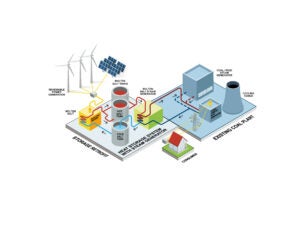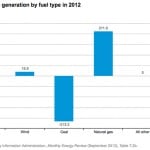Power generators consumed 34% of total U.S. energy uses from fossil fuels and accounted for 39% of the nation’s carbon emissions from fossil fuel combustion in 2014—a fraction of a percent more than in 2013—the Environmental Protection Agency (EPA) said in its newly released Greenhouse Gas Inventory report.
In 2014, 2,054.8 million metric tons of carbon dioxide equivalent (MMtCO2-e,) was produced by all electricity generation–related activities, compared to 2,052.8 MMtCO2-e in 2013, the EPA said. Almost all—2,039.3 MMtCO2-e—was emitted by fossil fuel combustion: 77% by coal power generators, 21% by natural gas generators, 1.2% by petroleum generators, and 0.02% by geothermal generators.
Stationary sources of electricity generation produced 0.4 MMtCO2-e of methane, about the same as in 2013.
The draft report, “Draft Inventory of U.S. Greenhouse Gas Emissions and Sinks: 1990-2014,” notes that generators relied on coal for about 39% of their total energy requirements in 2014, and that coal used by power generators accounted for 93% of all coal consumed for energy in the U.S.
But while the amount of power generated in the U.S. increased by 1.1% compared to 2013, carbon dioxide emissions from the power sector increased by 0.1% as the consumption of petroleum for power generation increased by 15.8% in 2014. The consumption of carbon-intensive coal and gas for power generation decreased by 0.1% and 0.2% respectively.
Significantly, the report highlights methane emissions, noting that methane is 25 times as effective as carbon dioxide at trapping heat in the atmosphere. Methane emissions made up a 10.3% share of all 2014 emissions, mostly produced by landfills, followed by enteric fermentation, the “natural gas systems,” coal mining, and manure management.
—Sonal Patel, associate editor (@POWERmagazine, @sonalcpatel)










